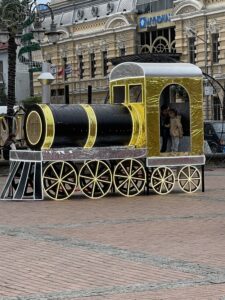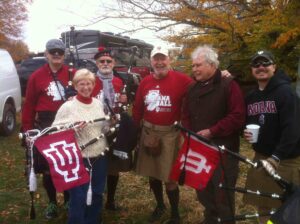
Edgar Allan Poe in The Raven holds out little hope for relief from the memories of the lost Lenore. Poe seeks respite in the mythical ancient Greek beverage, nepenthe, that causes forgetfulness. In those Dog Days of summer where August made the fires of hell sound inviting, respite and nepenthe finally arrived in September on the wings of the forward pass. Gentle Reader, allow me to quote my favorite author on our salvation from the hades of 100℉ temperatures:
“The crisp autumn air. The dry brown grass. Sweaty pads and the exhilaration of combat without weapons.
The kind of battle where one can experience the thrill of having been shot at and missed without even being shot at.
Football! Ersatz war. Clashes of pride, power and cunning.”
Echoes of our Ancestors: The Secret Game, p. vii
By James M. Redwine
Football has returned and the grass is going dormant. The experts may assert there is no connection but I say the frequency of mowing is inverted to my several favorite teams’ re-emergence in game day uniforms. Somehow the same weather that keeps me from doing outside chores does not hinder me from sitting in the heat for four hours watching boys and men shoving an inflated pig bladder covered with cowhide back and forth.
Perhaps it is because I no longer have to endure the two-a-day early morning and evening practices nor the inane exhortations of coaches who themselves also no longer must do so, but watching others play football sure beats working in the heat. In fact, Peg and I have already been jiggling our schedules so we can follow the Hoosiers, the Cowboys and the Sooners on Saturday. Our new season hopes are high but any disappointments can be assuaged with guacamole, chips and cold beer. Besides, even though we may have the occasional opportunity to attend a game in person, normally we will be sitting on the couch in 72-degree air conditioning while others entertain us with their sweat and blood and give us an excuse to leave the lawnmowers put away. I would not want you to think Peg and I have not had to make our own hard choices during the football season. For example, we had to get up at 5 o’clock in the morning to watch the 2023 Super Bowl when we were in the country of Georgia; it was tough.
Anyway, thank you to all those who have sacrificed their August sweating and preparing and now their autumn struggling for our relief. We truly appreciate it and will frequently raise a parting glass in your honor.



